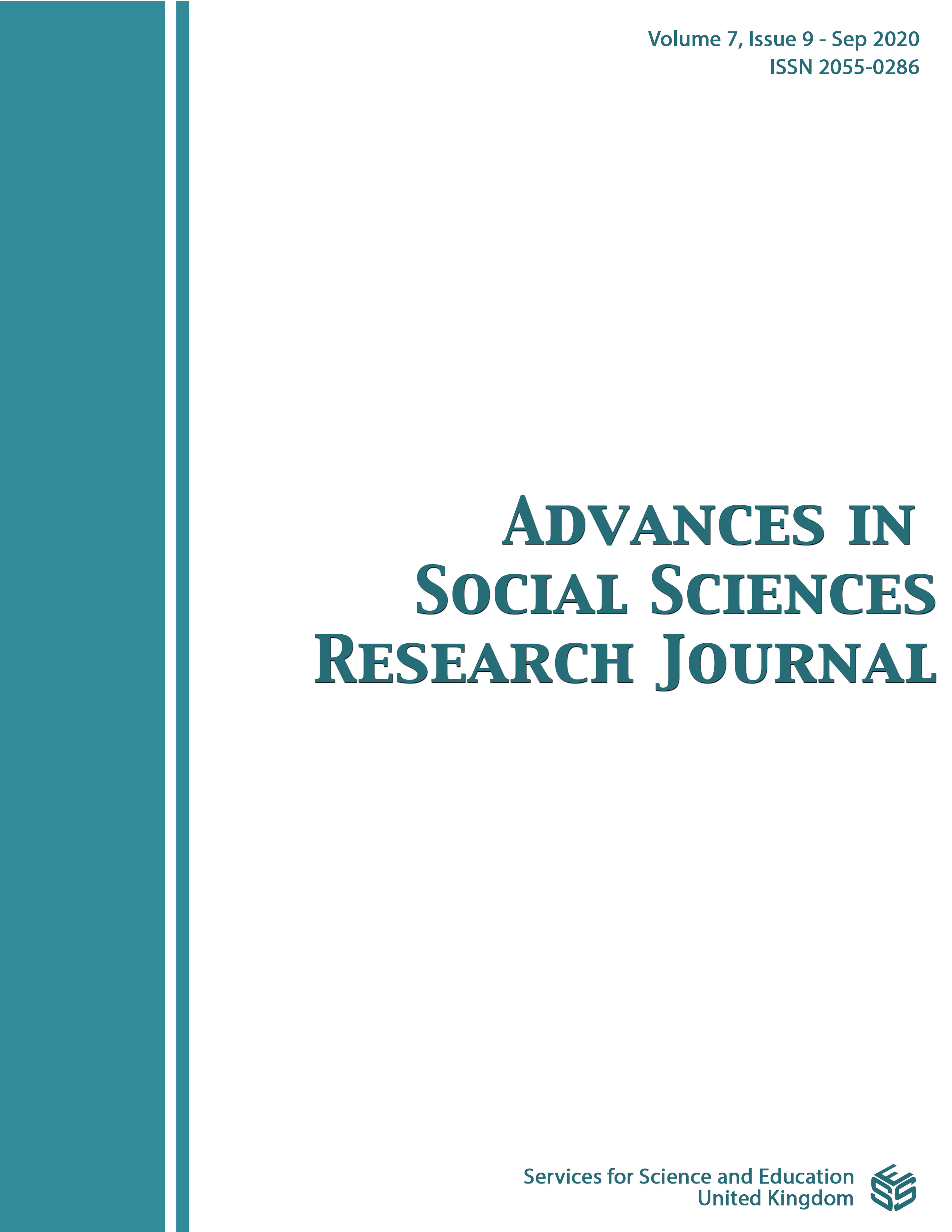EFFECTS OF SELECTED MACROECONOMIC VARIABLES ON DIASPORA REMITTANCES IN KENYA FOR THE PERIOD 1980 TO 2016
DOI:
https://doi.org/10.14738/assrj.79.9089Keywords:
Diaspora remittance, Economic Growth, trade oppenness, financial development, interest rate differencial, trade oppeness, currency depreciation.Abstract
This study investigated the effect of selected macroeconomic variables on diaspora remittances in Kenya. Earlier studies for Kenya on diaspora remittances have focused mainly on the importance of foreign remittances on economic growth and stock market performance with less focus on macroeconomic variables that drives the remittances. In particular, the study determined the effect of economic growth, interest rates, and openness of the economy, interest rates differential and exchange rates on diaspora remittances in Kenya for the period 1980 – 2016 based on quarterly data. The study found that currency depreciation increases diaspora remittances. Similarly, economic growth, financail sector development and openness of the economy were shown to increase diaspora remittances. Based on the findings, the study recommends the need for effective application of prudent macroeconomic policies to attract more diaspora remittances inflows. In addition, there is need to adopt policies geared towards financial sector development such as the policies on formalization of the informal financial services, leveraging on the technology for financial sector development. Lastly, establishing more economic ties beyond trade with other economies to address issues on the taxation and other charges on the remitting funds from abroad would go a long way in promoting diaspora remittances inflows.
References
[2]. Milanovic, B. Remittances and income distribution. Journal of Economic Studies, 1987. 14(5), p. 24 -37.
[3]. Higgins, M. L., Hysenbegasi, A., & Pozo, S. Exchange-rate uncertainty and workers' remittances. Applied Financial Economics, 2004. 14(6), p. 403-411.
[4]. Bouhga-Hagbe, J. Altruism and Workers’ Remittances: Evidence from Selected Countries in the Middle East and Central Asia, 2004, IMF Working Paper 06/130 (Washington: International Monetary Fund).
[5]. Yang, G. International Migration, Remittances and Household Investment: Evidence from Philippine Migrants’ Exchange Rate Shocks, The Economic Journal, 2008. 118 (528), p. 591-630.
[6]. Lueth, E., & Ruiz-Arranz, M. Are Workers' Remittances a Hedge Against Macroeconomic Shocks? The Case of Sri Lanka, 2007, IMF Working Paper.
[7]. Sayan, S.Business Cycles and Workers' Remittances: How Do Migrant Workers Respond to Cyclical Movements of GDP At Home?, 2006, IMF Working Papers 06(52), RePEc
[8]. Ricketts, J. Impact of Macroeconomic Shocks on Remittance inflows to Jamaica: A VECM Approach. Bank of Jamaica. World Economy, 2011. 1(3): p. 14 - 27.
[9]. El-Sakka, M. I. T., and R. McNabb. The Macroeconomic Determinants of Emigrant Remittances, World Development, 1999. 27(8), p. 1493–1502.
[10]. Elbadawi, I. A., & Rocha, R. R. Determinants of expatriate workers' remittances in North Africa and Europe (No. 1038), 1992, Country Economics Department, World Bank.
[11]. Glytsos, N., and Katseli, L. Theoretical and Empirical Determinants of International Labour Mobility: A Greek-German Perspective. Gordon and P. Thirlwall (eds.) 2002, MacMillan Press Ltd.
[12]. Amuedo-Dorantes, C. & Pozo, S. Worker’s Remittances and the Real Exchange Rate: A Paradox of Gifts. 2004. World Development, 32 (8): p. 1407-1417.
[13]. Lopez, H., Bussolo, M., & Molina, L. Remittances and the real exchange rate. 2007, World Bank Policy Research Working Paper, 4213
[14]. Becker, G. A theory of social interactions, Journal of Political Economy, 1974. 82(6): p. 1063‐1093.
[15]. Hagen-Zanker, Jessica and Siegel, Melissa. The Determinants of Remittances: A Review of the Literature (June 2007). 2007, MGSoG Working Paper No. 003. Maastricht Graduate School of Governance SSRN:
[16]. Organisation for Economic Co-oporation and Development. International Migrant Remittances and their Role in Development. 2006, International Migration Outlook.
[17]. Chami, R., Fullenkamp, C. & Jahjah, S. Are Immigrant Remittances Flows a Source of Capital for Development?, 2003, IMF Working Paper 03/189 (Washington: International Monetary Fund).
[18]. Vargas-Silva, C., & Huang, P. Macroeconomic determinants of workers' remittances: Host versus home country's economic conditions. Journal of International Trade, 2008. 3(2): p. 81–99.
[19]. Bank of Uganda, Diaspora Remittances. Retrieved from: 2007, http://www.centralbank.go.ke/index.php/rate-and statistics/diasporaremittance
[20]. Brown, R. P. C. (2004). Estimating remittance functions for Pacific Island migrants. World Development, 2004. 25(4): p. 613 – 627.
[21]. Smith, A. An inquiry into the nature and Causes of the Wealth of nations.1776, Oxford University Press.
[22]. Markowitz, H. Portfolio Selection. The Journal of Finance, 1952. 7(1): p. 77-91.
[23]. Wanyoike, M. Effect of Diaspora Remittance on Stock Market Performance at the Nairobi Securities Exchange. Unpublished MSC Project, 2015, University of Nairobi.
[24]. Waweru, T. The Effect of Macro Economic Variables on the Liquidity of Infrastructure Bonds Listed At Nairobi Securities Exchange. Unpublished MBA Project, 2014, University of Nairobi.
[25]. Aggarwal, R., & Spatafora, N. Remittances: Determinants and Impact, 2010, Mimeo International Monetary Fund.
[26]. Calderon, P., Acosta, C., Fajnzylber, C., and Lopez, H. Remittances and Development in Latin America”, World Economy, 2007. 29 (1): p. 957-987.
Downloads
Published
How to Cite
Issue
Section
License
Authors wishing to include figures, tables, or text passages that have already been published elsewhere are required to obtain permission from the copyright owner(s) for both the print and online format and to include evidence that such permission has been granted when submitting their papers. Any material received without such evidence will be assumed to originate from the authors.






